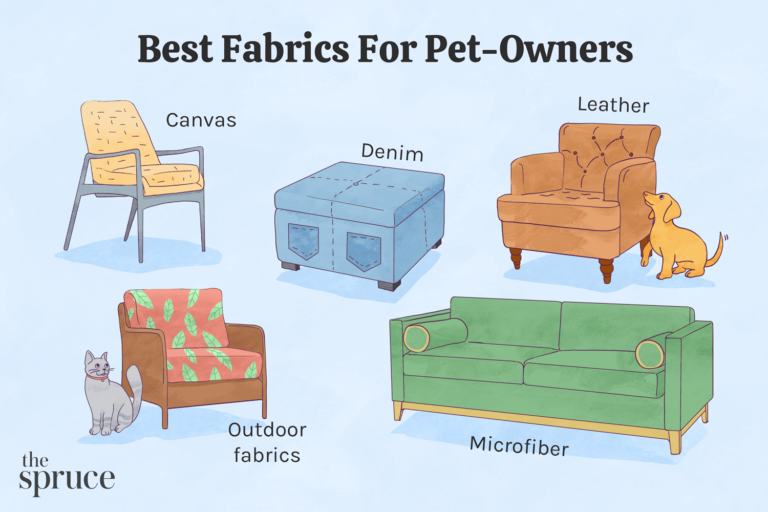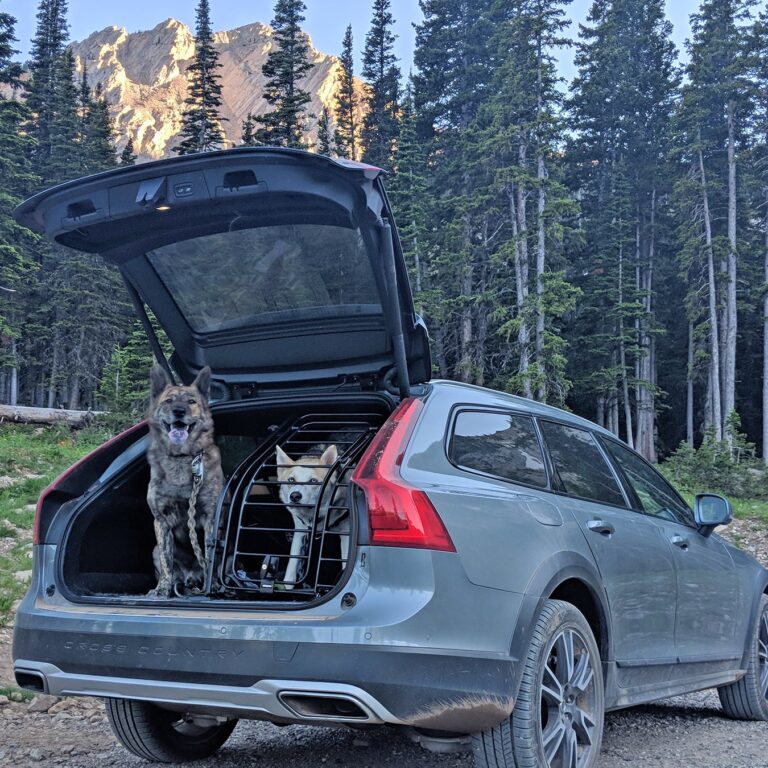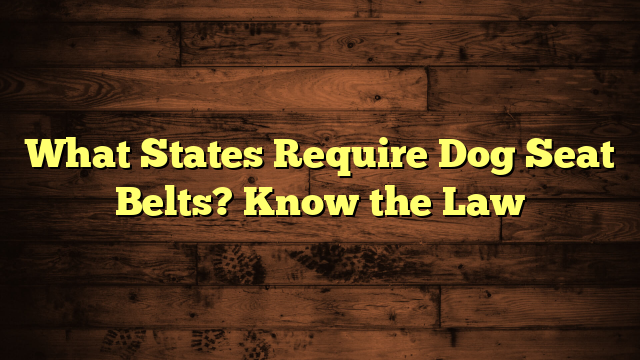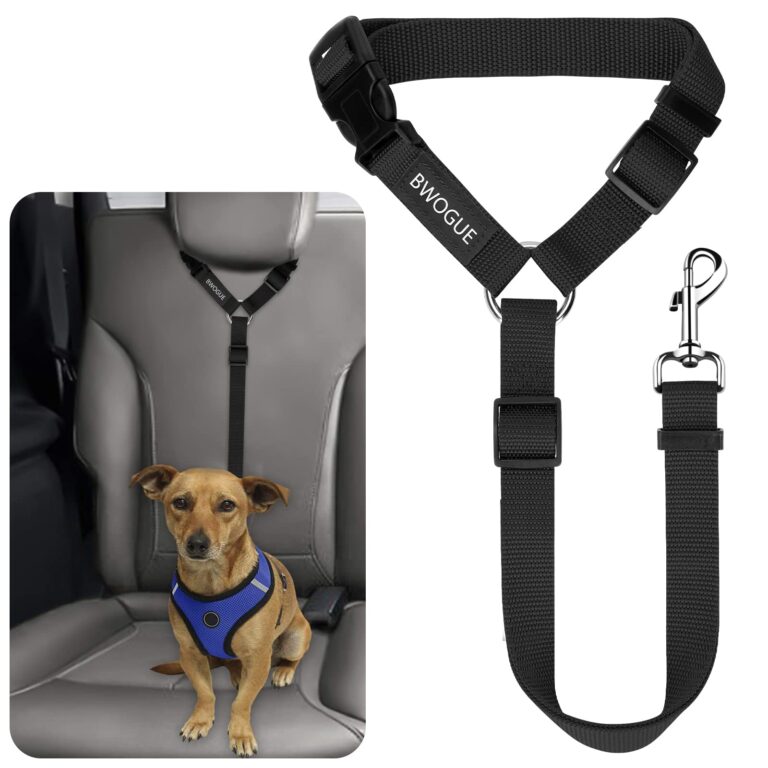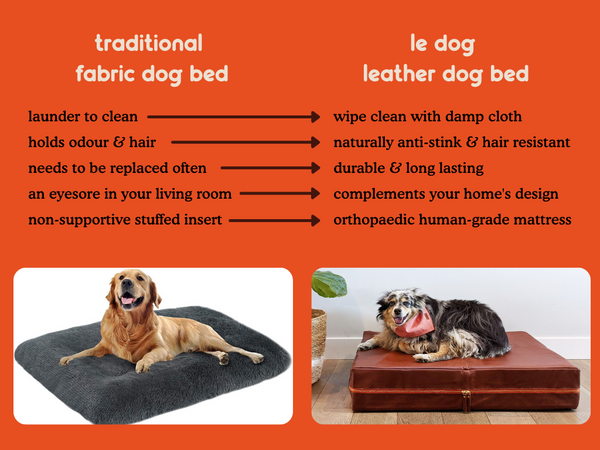Do Dog Seat Belts Really Work? Ensuring Pet Safety
Yes, dog seat belts do work. They enhance safety by securing pets during car rides, reducing the risk of injury.
Dog seat belts are essential for pet safety during car travel. These devices prevent pets from moving around the vehicle, minimizing distractions for drivers. They also protect pets in case of sudden stops or accidents. Using a dog seat belt can reduce the chances of severe injuries for both pets and passengers.
Various designs and sizes are available, making it easy to find the right fit for any dog. Investing in a quality dog seat belt ensures your pet’s safety and contributes to a safer driving experience. Always choose a seat belt that meets safety standards and provides comfort for your furry friend.

Credit: animalsmatter.com
Introduction To Pet Safety In Vehicles
Traveling with pets can be fun. But safety should always be the top priority. Unrestrained pets in vehicles pose serious risks to themselves and others. This section explores why securing your dog in the car is essential.
The Importance Of Securing Your Dog
Securing your dog in the car can prevent accidents. Dogs can become distractions if they move around freely. A sudden stop or crash can cause severe injuries to an unrestrained dog. Using a dog seat belt or crate keeps your pet safe and secure.
Seat belts also protect other passengers. A loose pet can become a projectile in a crash. This can hurt both the pet and people in the car. Keeping your dog restrained is vital for everyone’s safety.
Common Risks For Unrestrained Pets
Unrestrained pets face many dangers. They can jump out of open windows, leading to severe injuries or getting lost. Pets can also interfere with the driver, causing distractions.
Here are some common risks:
- Jumping out of windows
- Distracting the driver
- Becoming a projectile in a crash
- Getting injured in sudden stops
Using a dog seat belt or a pet crate can mitigate these risks. Always ensure your pet is secure before starting your journey.
What Are Dog Seat Belts?
Dog seat belts are safety devices designed to keep dogs secure while traveling in a vehicle. They help prevent injury in case of sudden stops or accidents. These belts attach to the car’s seat belt system, ensuring your dog stays in place.
Design And Features
Dog seat belts come in various designs to suit different needs. Most feature an adjustable harness, which wraps around the dog’s chest and back. This harness distributes force evenly, reducing the risk of injury. Some models also include padded sections for extra comfort.
Key features of dog seat belts include:
- Adjustable Straps: Easily customizable to fit dogs of all sizes.
- Durable Materials: Made from strong nylon or polyester for long-lasting use.
- Quick-Release Buckles: Allows for fast and easy attachment and removal.
- Compatibility: Designed to work with most car seat belt systems.
Varieties And Options Available
There are several types of dog seat belts to choose from. These options cater to different preferences and needs.
The main varieties include:
- Harness-Style Seat Belts: These belts come with a harness that wraps around the dog, providing maximum security.
- Clip-On Seat Belts: These attach directly to the dog’s existing harness, offering a simpler option.
- Zip Line Systems: These systems allow the dog to move along a line while staying secured in the car.
Each type has its pros and cons:
| Type | Pros | Cons |
|---|---|---|
| Harness-Style Seat Belts | Maximum security, evenly distributes force | Can be more complex to fit |
| Clip-On Seat Belts | Simple and quick to use | May not offer the same level of security |
| Zip Line Systems | Allows some movement for the dog | May be less secure in a crash |
Choosing the right dog seat belt depends on your dog’s size, behavior, and your personal preference. Always ensure the belt is properly fitted and secured before every trip.
The Mechanics Behind Dog Seat Belts
Dog seat belts are essential for keeping your furry friends safe during car rides. Understanding how they work can help you make an informed decision. This section delves into the mechanisms that make dog seat belts effective.
How Dog Seat Belts Function
Dog seat belts attach to your car’s seat belt system. They usually consist of a harness and a tether. The harness fits snugly around your dog’s body. It distributes force evenly in the event of a sudden stop.
The tether connects the harness to the car’s seat belt. It restricts your dog’s movement, preventing distractions while driving. The tether also keeps your dog from being thrown in case of an accident.
Materials And Durability
Dog seat belts are made from various materials. The most common material is nylon, known for its strength and flexibility. Nylon is also resistant to wear and tear.
Some dog seat belts feature metal components for added durability. These include metal buckles and clips. Metal parts are less likely to break under stress.
High-quality dog seat belts often include padding. Padding provides extra comfort for your dog. It also helps to minimize any potential injuries during sudden stops.
| Material | Durability |
|---|---|
| Nylon | High |
| Metal Components | Very High |
| Padding | Medium |
Choosing the right material ensures the longevity of the seat belt. It also ensures the safety and comfort of your dog.
Effectiveness Of Dog Seat Belts
Dog seat belts are essential for your pet’s safety while traveling. But do they really work? This section will explore the effectiveness of dog seat belts, focusing on safety tests and real-world accident scenarios.
Safety Tests And Certification
Before being sold, dog seat belts undergo rigorous safety tests. These tests ensure that the belts can protect your pet during a car crash. The Center for Pet Safety (CPS) is a key organization that tests dog seat belts. They simulate car crashes to see how well the seat belts protect dogs.
Certified dog seat belts meet high safety standards. Look for products with the CPS certification. This means they have passed crash tests and are safe for your pet. Some brands also get tested by third-party labs. These tests add an extra layer of security.
Real-world Accident Scenarios
Real-world accidents show how dog seat belts perform outside labs. Many pet owners report that seat belts saved their dogs in crashes. In one case, a dog seat belt kept a pet secure during a rollover accident. The dog had no injuries, thanks to the seat belt.
Another example comes from a head-on collision. The dog seat belt prevented the pet from being thrown out of the car. The pet only had minor bruises. These stories show the real-world effectiveness of dog seat belts.
Not all dog seat belts perform equally in accidents. Some may fail under extreme conditions. Always choose a seat belt that has passed crash tests. This increases the chances of your pet staying safe.
Comparing Dog Seat Belts With Other Restraints
Comparing dog seat belts with other restraints can help you understand the best options for your pet’s safety. This section will explore the differences between harnesses and seat belts and the use of crates and barriers in vehicles.
Harnesses Vs. Seat Belts
Both harnesses and seat belts keep dogs safe in cars. Each has unique benefits.
Dog seat belts attach to your car’s seat belt system. They limit your dog’s movement, reducing the risk of injury during sudden stops or accidents. Seat belts are easy to use and suitable for most dogs.
Harnesses distribute force across a dog’s body. This makes them a comfortable option. They connect to the car’s seat belt system, ensuring your dog stays secure. Harnesses come in various sizes, fitting dogs of all breeds.
Check the table below for a quick comparison:
| Feature | Dog Seat Belts | Harnesses |
|---|---|---|
| Attachment | Car Seat Belt | Car Seat Belt |
| Comfort | Moderate | High |
| Security | High | High |
| Ease of Use | Easy | Moderate |
Crates And Barriers In Vehicles
Crates and barriers are other options for keeping dogs safe in cars. They offer different levels of protection.
Crates provide a confined space for your dog. They prevent movement during travel. Crates can reduce distractions for the driver. They come in various sizes to fit different dog breeds.
Barriers separate the dog from the driver and passengers. They limit the dog’s movement within the car. Barriers are easy to install and remove. They work well for larger dogs.
Below is a quick comparison of crates and barriers:
| Feature | Crates | Barriers |
|---|---|---|
| Space | Confined | Limited |
| Driver Distraction | Reduced | Reduced |
| Installation | Moderate | Easy |
| Suitable For | All Breeds | Larger Breeds |
Legal Requirements And Recommendations
Dog seat belts are not only about safety but also about compliance. Knowing the legal requirements and recommendations can help you avoid fines. It also ensures the safety of your furry friend.
State Laws On Pet Restraints
Different states have different laws regarding pet restraints. Some states enforce strict rules, while others have recommendations. Below is a table summarizing state laws on pet restraints:
| State | Pet Restraint Law |
|---|---|
| California | Requires pet restraint while driving |
| New Jersey | Fines for unrestrained pets |
| Hawaii | Pets cannot sit on driver’s lap |
Always check your state’s specific laws. This ensures you comply with legal requirements.
Endorsements From Pet Safety Organizations
Pet safety organizations strongly endorse the use of dog seat belts. Groups like the American Kennel Club and Center for Pet Safety provide guidelines. These guidelines help pet owners choose the best seat belts for their dogs.
- The American Kennel Club emphasizes the use of certified seat belts.
- The Center for Pet Safety tests and approves dog seat belts.
- They publish lists of safe and reliable products.
Following these endorsements ensures your dog is safe and comfortable. Make sure to use certified and tested products. Your dog’s safety is worth the investment.
Choosing The Right Seat Belt For Your Dog
Choosing the right seat belt for your dog is crucial for safety and comfort. A well-fitted seat belt can protect your dog in case of sudden stops or accidents. This section will guide you through important factors to consider.
Size And Breed Considerations
Your dog’s size and breed play a vital role in picking the right seat belt. A seat belt that fits a Chihuahua will not fit a Labrador. Measure your dog’s chest and neck to ensure a proper fit. Use the size chart provided by the manufacturer.
Here is a quick guide to help you:
| Dog Size | Chest Measurement | Recommended Seat Belt Size |
|---|---|---|
| Small (e.g., Chihuahua) | 10-14 inches | Small |
| Medium (e.g., Beagle) | 15-25 inches | Medium |
| Large (e.g., Labrador) | 26-35 inches | Large |
| Extra Large (e.g., Great Dane) | 36+ inches | Extra Large |
Comfort And Adjustability Features
Comfort is as important as safety. Look for seat belts with padded chest straps. This reduces pressure on your dog’s chest during travel. Adjustable straps are essential. They help you get the perfect fit for your dog.
Consider the following features:
- Padded Straps: For extra comfort during long trips.
- Adjustable Buckles: Easy to adjust to fit your dog’s size.
- Quick-Release Mechanism: For easy on and off.
A comfortable dog is a happy dog. Ensure the seat belt is not too tight or too loose.
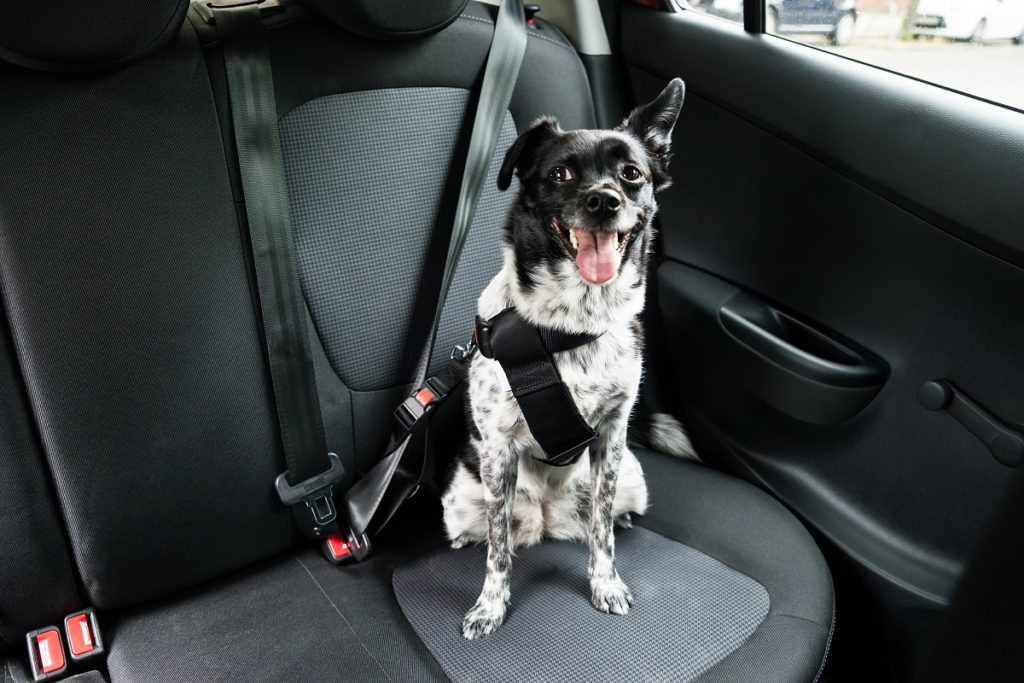
Credit: canna-pet.com
Installation And Usage Tips
Dog seat belts keep your furry friend safe during car rides. Proper installation and usage are essential. Let’s explore how to fit the seat belt and train your dog to use it.
Step-by-step Guide On Fitting
Follow these steps to install a dog seat belt correctly:
- Choose the right seat belt: Ensure it fits your dog’s size and weight.
- Attach the seat belt to the harness: Use a harness, not a collar, to avoid neck injuries.
- Secure the seat belt to the car: Clip it to the car’s seat belt buckle or latch system.
- Adjust the length: Allow your dog to sit, stand, and lie down comfortably.
| Step | Description |
|---|---|
| 1 | Choose the right seat belt |
| 2 | Attach the seat belt to the harness |
| 3 | Secure the seat belt to the car |
| 4 | Adjust the length |
Training Your Dog To Use Seat Belts
Training your dog to use a seat belt helps reduce anxiety and ensures safety. Here are some tips:
- Start slowly: Let your dog wear the harness indoors to get used to it.
- Reward with treats: Give treats for calm behavior while wearing the seat belt.
- Short trips first: Begin with short car rides to build comfort and confidence.
- Consistent practice: Use the seat belt on every trip to form a habit.
Dog seat belts are essential for safe car rides. Proper installation and training ensure your dog stays secure and comfortable.
Testimonials And Reviews
Dog seat belts are growing in popularity. Many pet owners are trying them. This section reviews dog seat belts. It includes real-life experiences and expert opinions. You will read testimonials from pet owners and ratings from experts.
Pet Owner Experiences
Many pet owners have shared their experiences using dog seat belts. Here are some of their thoughts:
- Jane from California: “I feel safer with my dog buckled up. My dog seems more comfortable too.”
- Mike from Texas: “I had a sudden stop. The seat belt kept my dog safe. No injuries at all!”
- Susan from New York: “My dog used to move around too much. Now, he stays still and calm.”
These testimonials show a common theme. Pet owners find dog seat belts helpful and safe.
Expert Opinions And Ratings
Experts also have opinions on dog seat belts. They rate them based on safety and comfort. Here is a table summarizing expert reviews:
| Expert | Rating | Comments |
|---|---|---|
| Dr. Smith, Vet | 4.5/5 | Highly recommends for long trips. Reduces injury risk. |
| Pet Safety Institute | 4/5 | Tested in crashes. Proved to be effective. |
| Animal Welfare Group | 5/5 | Best way to ensure pet safety in cars. |
Experts agree dog seat belts work. They provide safety and peace of mind.
Future Of Pet Safety In Cars
The future of pet safety in cars is bright and promising. With advancements in technology and heightened awareness, pet safety is becoming a priority. Dog seat belts are evolving and becoming more effective.
Innovations In Pet Restraint Technology
Innovations in pet restraint technology are transforming the landscape of pet safety. These advancements ensure that our furry friends are secure and comfortable during car rides.
- Adjustable Harnesses: New harnesses offer adjustable features for better fit and comfort.
- Crash-Tested Products: Many pet seat belts undergo rigorous crash testing for safety assurance.
- Quick-Release Mechanisms: Quick-release mechanisms allow easy and fast detachment.
These innovations aim to provide maximum protection and ease of use. They are designed to keep pets safe without compromising on their comfort.
The Role Of Vehicle Manufacturers
Vehicle manufacturers play a vital role in enhancing pet safety in cars. Their collaboration with pet safety companies is paving the way for integrated solutions.
| Manufacturer | Initiative |
|---|---|
| Subaru | Partnership with pet safety companies for crash-tested products. |
| Volvo | Development of in-car pet safety accessories. |
These manufacturers are incorporating pet safety features into their vehicle designs. Their efforts are ensuring that pets are as safe as humans during travel.
Future advancements in this area will likely see more collaborations. They will bring about safer and more efficient pet travel solutions.
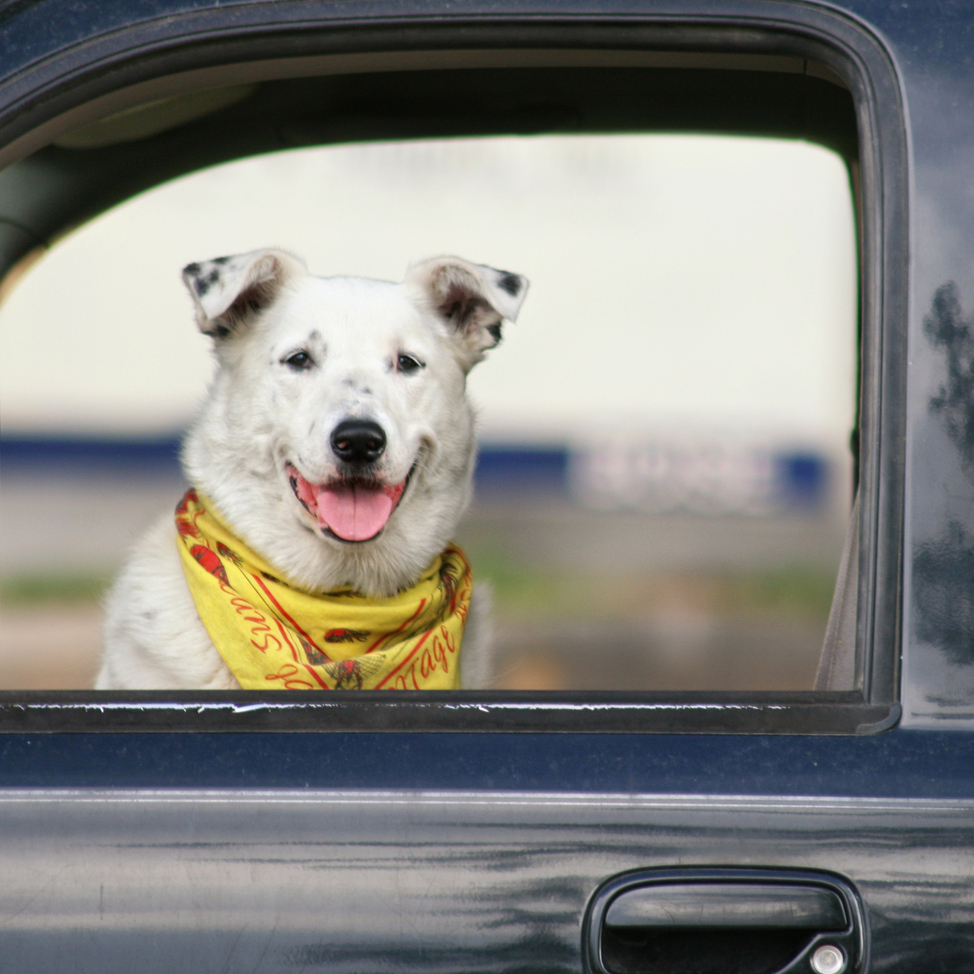
Credit: dogtime.com
Frequently Asked Questions
Do Dog Seat Belts Actually Help?
Yes, dog seat belts help. They secure your pet during car rides, reducing injury risks in accidents. They also prevent distractions while driving.
What Is The Safest Way For A Dog To Travel In A Car?
Use a crash-tested dog harness, crate, or carrier. Secure it to the car’s seatbelt system. Avoid front seats.
What Is The Safest Car Restraint For A Dog?
The safest car restraint for a dog is a crash-tested harness. It keeps your pet secure during travel. Look for brands like Sleepypod or Kurgo. These harnesses provide both safety and comfort. Always ensure the harness fits well and is properly adjusted.
What States Require Dog Seat Belts?
New Jersey and Rhode Island require dog seat belts. Other states like Hawaii have laws against unrestrained pets in cars.
Conclusion
Choosing a dog seat belt can significantly enhance your pet’s safety during car rides. These devices reduce the risk of injury. Ensure the seat belt fits well and is properly secured. Always prioritize your dog’s comfort and security. Investing in a reliable dog seat belt is a wise decision for every pet owner.
- Can I Get in a Taxi Without a Car Seat? - January 26, 2025
- Can I Get Chlamydia From a Toilet Seat? - January 26, 2025
- Can I Get an Uber With a Car Seat? - January 26, 2025

